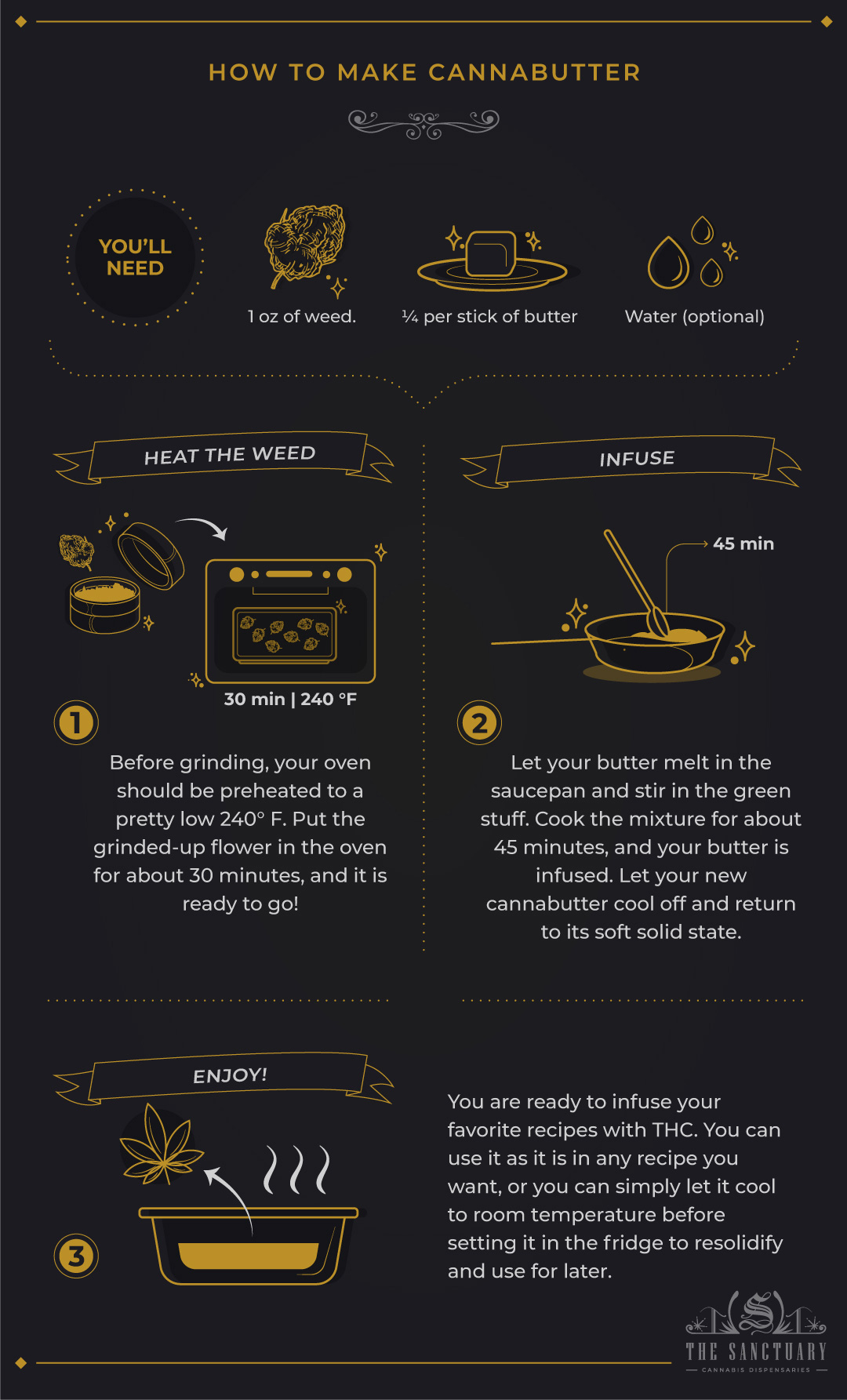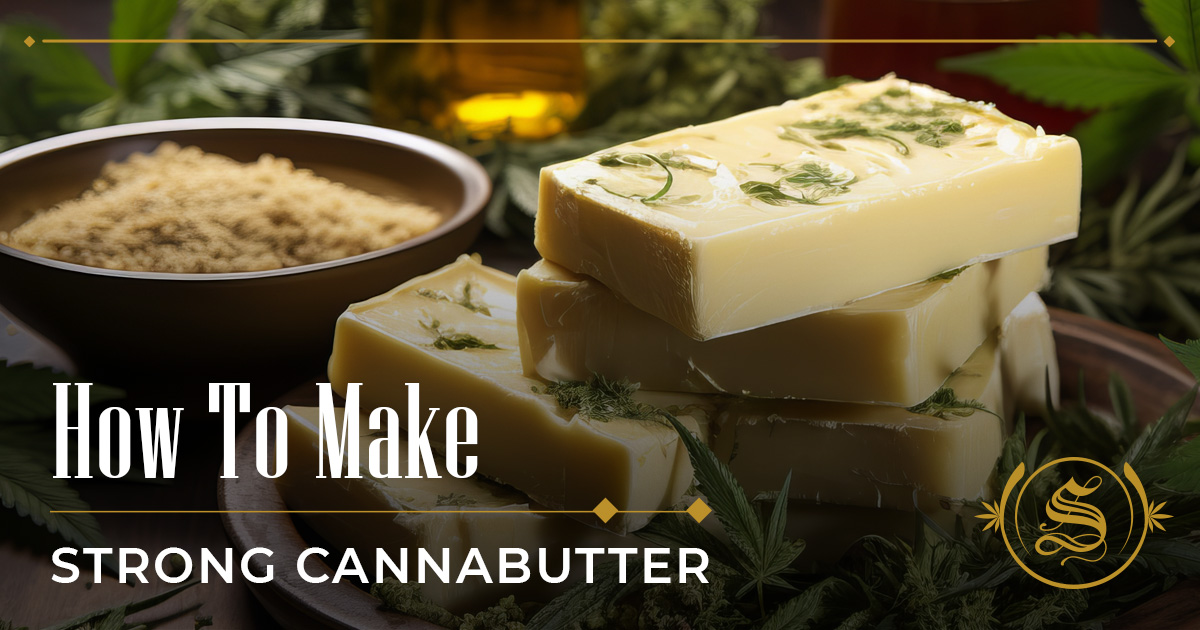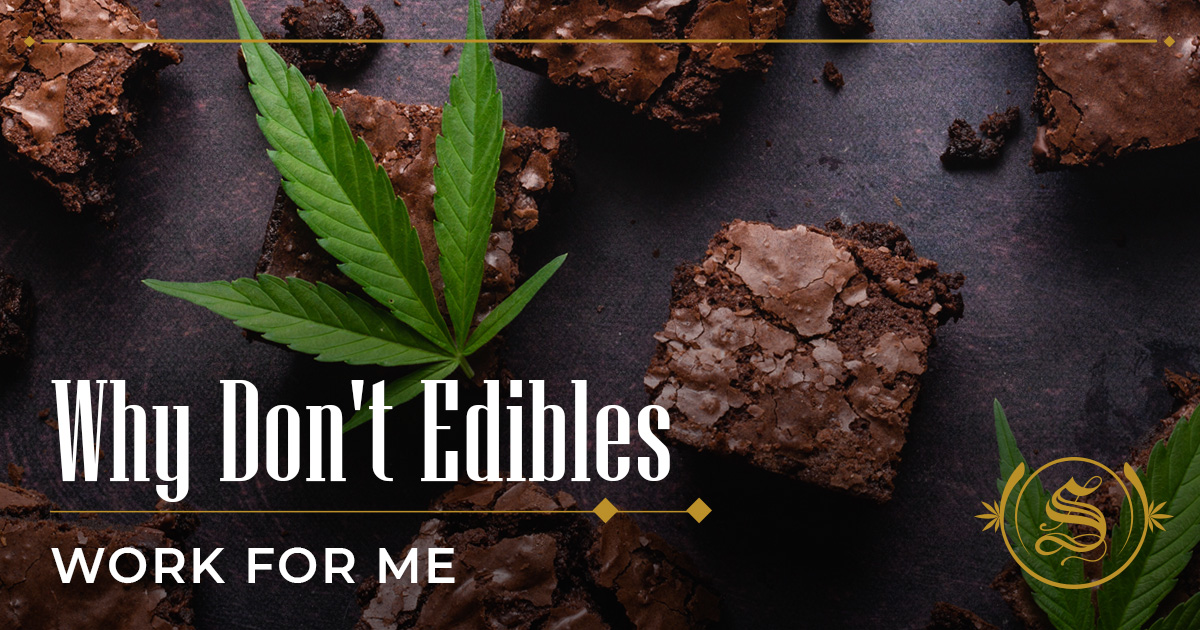Iftikhar Alam
Author
Reviewed by Cannabis Experts
Published on: June 15, 2022 | Updated on: September 11, 2024
Whether you are making chocolates, pancakes or any cannabis infused dish, cannabutter is possibly the most staple ingredient in any edible cook’s kitchen, and for very good reason. With a delicious flavor and recipe as easy as 1-2-3 (literally, there are only three steps to making it), Cannabutter is just about the easiest infusion ingredient you could use, and you can make it just in time for dinner tonight.
Even if you are making it for the very first time after reading this, cannabutter can be made just by heating the two ingredients and cooling them so that they fuse together. Low, slow simmers and pressure cooking work wonders for cannabutter, but if you don’t have as much time on your hands, you can still make a completely satisfying infused butter and we will lay out everything you need and how to do it right.
What is Cannabutter?
As its name suggests, cannabutter is butter infused with cannabis: simple as that. Cannabutter can be infused with any and every cannabis strain you want, whether it be straight CBD or a mix of THC with CBD, normally used to give edibles that special perk. It is also so easy to use that you can infuse any dish you normally make at home, stir in a tablespoon of cannabutter and now you have an infused dish.
Cannabutter is most famously used for edibles like desserts or other baked goods, both as a treat and as a way for medical users to get their dosage without smoking. In the steps below on how to make cannabutter, you will find that it is just as easy to make as it is to use.
What Does Cannabutter Do?
So we established that cannabutter is a way to turn a normal dish into an infused dish, but how exactly does that work? Basically, cannabutter is made from grinded-up cannabis that has been decarbed so that it releases THC before you add the flower to the butter.
A fairly common question from that is, “If I’m going to bake the weed and weed butter into my edibles, and that heats the weed up, why do I have to decarb it?” Not that it’s impossible to make edibles without decarbing but you will not get the results you are looking for, because the THC has not been activated and therefore will not actually infuse your dish.
So, if you want the ‘high’ or the full CBD effect in your infusions, decarbing the weed is an essential, necessary step to making cannabutter.
How to Make Cannabutter

If you have the cold, heavy cream on standby and an arm to get a vigorous shake going, you can actually make your own butter from scratch and add your heated flower at the end. However, for the purpose of this recipe, we are simply infusing the store-bought stuff.
You will be amazed at how few things you need to actually make it and how well it all comes together. Not only that, but less than an hour of active cooking time before cooling will still give you a cannabutter that you would want to eat with a spoon (please consume responsibly).
Kitchen Tools and Ingredients
For this recipe, you will need nothing more than some flower and butter (about 7 grams or a quarter per stick of butter). No joke, that is the entire recipe apart from a touch of water, optionally, to keep the butter from scorching.
As far as kitchen tools go, all you need is a medium saucepan on a stovetop, and a wooden spoon or any other mixing spoon to give it all a stir.
Step 1: Heat the Weed
As with any fun thing involving weed, always start by grinding it up. While it is possible to heat or decarb whole nugs of flower, it is not recommended because you won’t be able to filter out the flower properly and you cannot guarantee that you are getting all the THC out of it. Grinding your weed ensures that your straining at the end is an easy process and you are getting all of the possible THC.
Before grinding, your oven should be preheated to a pretty low 240° F (Reminder: You are not trying to cook the flower), you are just trying to activate the THC so that it spreads throughout the butter and eventually the dish. Put the grinded-up flower in the oven for about 30 minutes, and it is ready to go!
Step 2: Infuse
Now that your flower is prepped, the second to last step is to let your butter melt in the saucepan (but not too long, you don’t want it to burn or evaporate) and stir in the green stuff. Do not worry about over-stirring because you are going to strain out the flower at the end.
But before you strain, cook the mixture for about 45 minutes, and your butter is infused. The last step is to let your new cannabutter cool off and return to its soft solid state.
Step 3: Enjoy!
It may take a little longer after the actual cooking to cool down, but you nonetheless took barely an hour to make a very simple but delicious cannabutter. Cheers! Now you are ready to infuse your favorite recipes with THC and add a soft texture and buttery flavor to your edibles.
Some recipes call for melted butter, so you could take this new mixture off of the stove when it finishes cooking and stir it into your recipe or just enjoy it as a dip for some crusty Italian bread. But, if you do not plan on cooking with the cannabutter right away, no worries: Simply let the butter cool to room temperature before setting it in the fridge to resolidify and use for later.
How Long Does it Last?
You are in luck, because cannabutter is perfect for freezer storage (one of the few cannabis products suitable for this outside of edibles). You can still keep it in the fridge for up to 2 weeks from the day you make it, but it will last up to 6 months in the freezer.
Imagine a couple months down the road when you have to re-up again, you happen to have a craving for edibles and remember you have a stash of homemade cannabutter just chilling (sorry) in the freezer. It’s like finding a hidden treasure!
Are there substitutes for cannabutter?
Thankfully, your many options can vary from simple decarbed flower to infusing the cooking oil of your choice instead of butter. It does not matter if you use olive oil, grapeseed oil or canola: Take any oil that you would normally cook with and follow virtually the same heating and infusion methods to make canna oil.
Vegan butter is also a great choice for dietary restrictions but still want a butter flavor and consistency, and now that you know the recipe, you can make it at home at any time.
The content provided on this blog is for informational purposes only and does not constitute medical, legal, or professional advice. Cannabis use is subject to local laws and regulations, which vary widely by jurisdiction. Always consult with a healthcare professional before starting any new treatment or altering an existing treatment regimen. The authors and publishers of this blog are not responsible for any actions taken based on the information provided herein. Use cannabis responsibly and in accordance with applicable laws. This blog is intended for adults aged 21 and over. The Sanctuary Dispensaries D186, D187.








